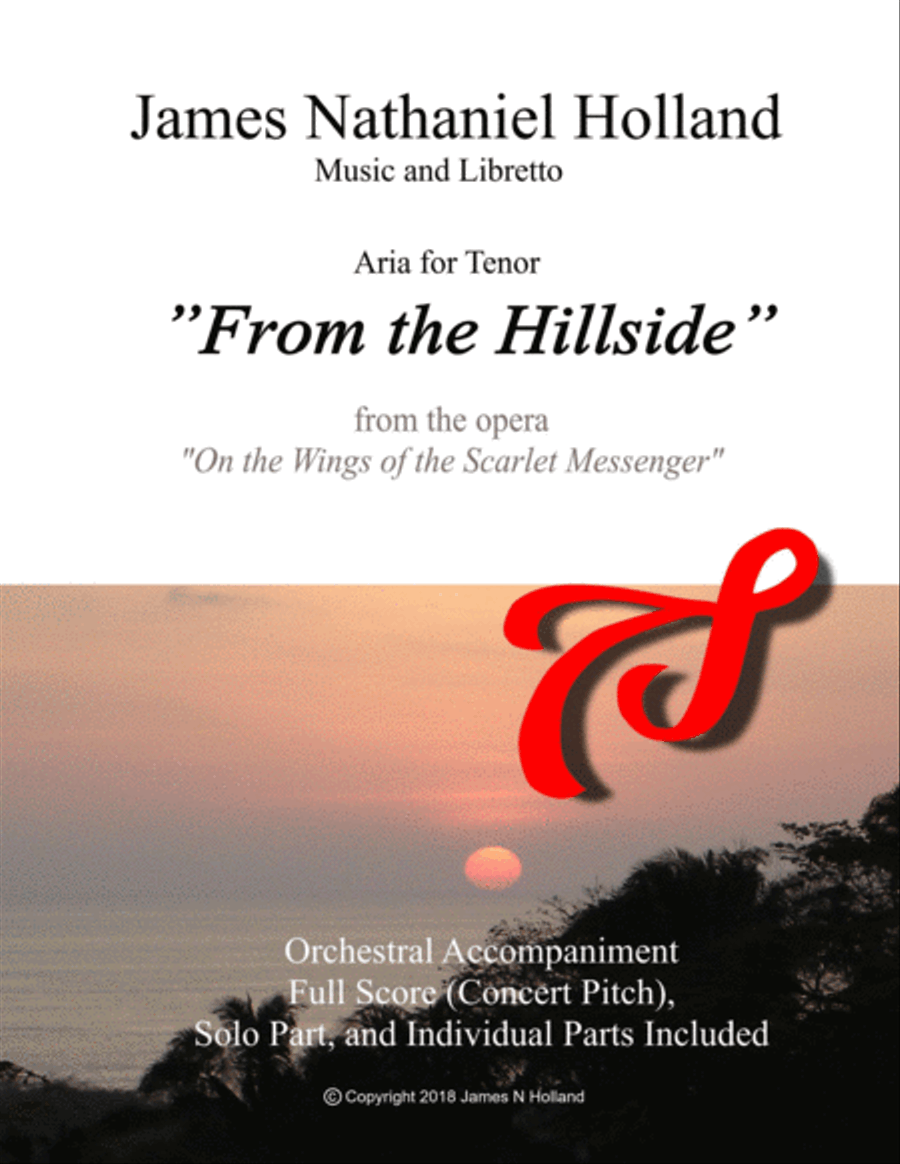Full Orchestra - Level 4 - Digital Download SKU: A0.730401 Composed by James Nathaniel Holland. Contemporary,Musical/Show,Opera. Score and parts. 37 pages. James Nathaniel Holland #3142471. Published by James Nathaniel Holland (A0.730401). Tenor Aria From the Hillside from the 21st Century Opera ON THE WINGS OF THE SCARLET MESSENGER (Based on the Henry James novel, On the Wings of a Dove) here with full orchestral accompaniment. (Full score in concert pitch, voice, and individual parts included) This accompaniment can also be used with the solo and male ensemble that is contained in the full vocal score.Instrumentation: pic, fl12,ob12,eh,cl12,bcl,tenor sax, bsn12,hrn1234, trpt 12, trmb, btrm, timp, hand cym/egg shaker, hrp, voice, stringsDuration: 4:00 minutes (Sample here begins with extra measure) Video presentation at: https://www.youtube.com/watch?v=u47yb4kiE0Y Curious? Listen to the complete opera playlist en demo at: http://www.youtube.com/watch?v=Rr5x_aXnUMM&list=PLEcbVsA36MCvHG_MTBdv7x2UNjwG27sMa Adaptation, Libretto, and Music by James Nathaniel Holland Performance: James Nathaniel Holland, Tenor Orchestra: CH Symphony Group (Complete Duration: 2 hours) BRIEF SYNOPSIS: In the urban capital of Soon Rafa, lovers Mariana (Soprano) and Kai (Bass) cannot be together because of Mariana's disapproving wealthy Aunt (Mezzo-Soprano). Torn between love and financial security, an unlikely opportunity arises when a dying rich Occidental, Justin (Tenor) reveals his romantic interest in Kai. The couple plot a pretense to inherit Justin's money and be free to marry and live together. This aria occurs in Act I, Scene 2. Justin (tenor) has just hired a group of porters, including Kai (bass), to guide him through the jungles of the island to photograph the mythical bird, the Scarlet Messenger. Although the men insist it is a legend, Justin inspires them to persevere with him. Aria Libretto, Justin (tenor singing): From the hillside, something breaks free. Is it real? Or just illusion? Oh how I have to see you, feel that beauty. Upon your wings our souls must one day fly to heaven. Never doubt that you can find him, hiding among your dreams. For when you feel all hope is gone, that's when you spot his red wings, fiery bright. (to the group of porters) So come with me, all's not in vain. It is real, just not illusion. The day is fading fast, oh, so quickly. We'll be the first to see that blazing path of fire. The Scarlet Messenger! Oh how that would be the greatest gift of my life. Composer website: http://lacoronadelossantos.net/jamesnathanielholland.html Music, Lyrics, Performance Copyright 2017 James Nathaniel Holland.
